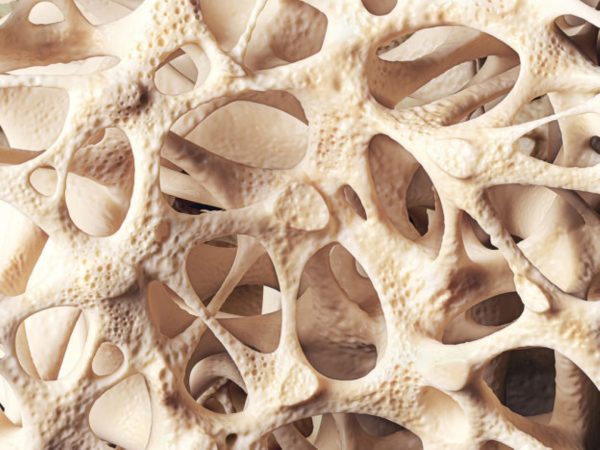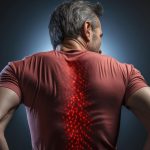The Incredible Shrinking Man isn’t just the title of an old science fiction movie. It’s also a reality. We shrink as we age.
Starting at about age 40, most people tend to lose about a quarter to a half inch of height each decade.
Part of the reason is because of the gel-like cushions between your vertebrae. They support your posture and act as shock absorbers. But over time, they gradually compress and flatten. So the spaces between your vertebrae get smaller, which basically makes your spinal column shorter. But shrinking too quickly or too much is not normal. It’s not a symptom of old age.
Rather, excessive height loss is a sign of low bone mineral density, otherwise known as osteoporosis. And it’s not something you should take lightly.
Osteoporosis makes all of the bones in your body more fragile, which places you at a much greater risk of a sudden fracture. It could be an arm fracture, a hip fracture or even a spinal fracture. Any one of these could result in chronic pain and disability. And who wants that?
And by the way, gentlemen. Don’t think you’re immune. After a certain age, men and women both have a similar risk of hip fractures, so you need this information too.
When Should You Get a Bone Density Test?
If you’re losing more height than you should, it is likely a warning sign that you have low bone density. As far as I’m concerned, the diagnosis portion is critical.
The gold standard for measuring bone density is called a DEXA scan. It typically measures mineral density in the hips and spine. Taking it doesn’t involve any prepping. There is no starving yourself beforehand or gulping huge quantities of a “prep” drink. And it takes less than a half hour.
You lie still on a table while a scanning arm passes over your body with a narrow beam of low-dose X-rays. Afterward you’ll receive a “T-Score.”
- A score of -1 and above means your bone density is normal.
- Anything between -1 and -2.5 indicates your bones are weaker than they should be.
- A score of -2.5 or below means that it is very likely that you have osteoporosis.
This test can be done every two years, and Medicare will pay for it.
Any outpatient radiology diagnostic center that has a DEXA scan can do it. So if your doctor isn’t on top of it, it’s something you should seek out.
The good news is that, if your score indicates weak bones, you can take steps to improve your bone health.
Keep Your Bones Strong and Healthy
The problem with low bone density is that bone breakdown occurs faster than bone builds up. This, of course, causes a gradual loss of bone mass. And if you don’t address it, you’ll end up with weak, brittle bones that break and fracture easily.
Physical activity is one of the best ways to initiate less bone loss and more bone buildup. Walking is especially good to prevent hip fractures. As long as you put stress on the bone by walking or treadmilling or water aerobics – even climbing stairs or dancing – you’ll build bone. Consider it exercise for your bones, just like you exercise for your muscles.
But don’t neglect the upper body. There are a lot of upper body activities you can do with a resistant band, dumbbells or a medicine ball. Or you can use your own body weight to do things like wall push-ups.
And what about nutrients?
The critical nutrient people are missing is calcium hydroxyapatite. This is the form of calcium found in bone, which makes it especially effective when it comes to bone building. But it’s not all about the calcium.
That’s why I recommend looking for a good bone building formula that includes microcrystalline hydroxyapatite (MCHC), along with calcium, magnesium, potassium and vitamins D and K.
With regular testing and preventive measures, you can stand tall for years to come.
SOURCES:
Mikula AL, Hetzel SJ, Binkley N, Anderson PA. Validity of height loss as a predictor for prevalent vertebral fractures, low bone mineral density, and vitamin D deficiency. Osteoporos Int. 2017 May;28(5):1659-1665.
Tong X, Chen X, Zhang S, Huang M, et al. The Effect of Exercise on the Prevention of Osteoporosis and Bone Angiogenesis. Biomed Res Int. 2019:8171897.
Feskanich D, Bischoff-Ferrari HA, Frazier AL, Willett WC. Milk consumption during teenage years and risk of hip fractures in older adults. JAMA Pediatr. 2014 Jan;168(1):54-60.
O’Keefe JH, Bergman N, Carrera-Bastos P, Fontes-Villalba M, DiNicolantonio JJ, Cordain L. Nutritional strategies for skeletal and cardiovascular health: hard bones, soft arteries, rather than vice versa. Open Heart. 2016;3(1):e000325.
Bristow SM, Gamble GD, Stewart A, Horne L, House ME, Aati O, Mihov B, Horne AM, Reid IR. Acute and 3-month effects of microcrystalline hydroxyapatite, calcium citrate and calcium carbonate on serum calcium and markers of bone turnover: a randomised controlled trial in postmenopausal women. Br J Nutr. 2014 Nov 28;112(10):1611-20.



